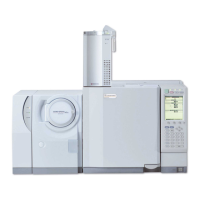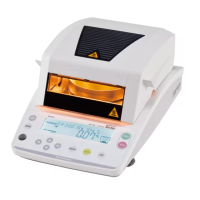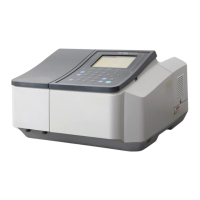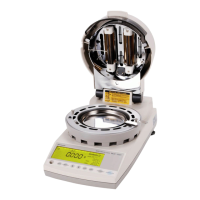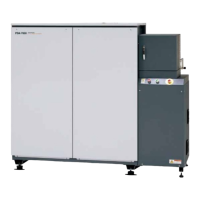5 Quantitative Analysis
66 GCMS-QP2010 Series Operation Guide
3
Change the [Curve Fit Type], [Zero], and [Weighted Regression] settings, as necessary.
4
After finishing making changes, click [OK].
Calibration curves are corrected according to the changed parameters.
No. Name Explanation
1 Curve Fit Type Specifies how to plot the calibration curve.
• Linear: Determines the calibration curve as a straight line from the obtained
values.
• Point to point: Points are connected by a broken line. No formula is displayed
for point to point calibration curves.
• Quadratic: Curve is fit to each point using a quadratic equation. This requires
at least three points on the calibration curve. For two points or less, the curve
is calculated as linear.
• Mean RF: First, it determines straight lines passing through the origin and
each point. Then it finds the simple average of the slopes for each line.
Consequently, the resulting calibration curve always passes through the
origin.
2 Zero Select either [Not Forced] or [Force Through]. Normally, select [Not Forced].
3 Weighted
Regression
A typical least squares method of plotting calibration curves could result in a
quantitation error that is larger the lower the concentration at the calibration point. In
general, when the calibration curve has a large dynamic range (maximum
concentration is at least 50 times higher than the minimum quantitation limit),
formulas are weighted to reduce the weight of higher concentration points of the
calibration curve. Typically, formulas are optimized by checking the correlation
coefficient and contribution ratio.
• [1/C2]: Formulas are weighted by the inverse of the concentration value
squared.
• [1/C]: Formulas are weighted by the inverse of the concentration value.
• [1/A2]: Formulas are weighted by the inverse of the area value squared (or
height value when a height is specified for the data used).
• [1/A]: Formulas are weighted by the inverse of the area value (or height value
when a height is specified for the data used).
3
2
1
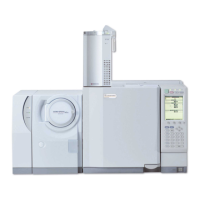
